Discover the Galapagos – Your Island by Island Guide
One destination, 13 Islands, one unforgettable experience: Your Island by Island Guide to the Galapagos takes you on a whirlwind journey of astonishing sights and captivating wildlife.
A trip to the Galapagos Islands is unlike any adventure you’ll ever have and that’s because this magnificent place is unlike any other you’ll ever visit. The world’s most famous wildlife-watching destination – and certainly one of South America’s most magnificent highlights – the Galapagos are captivating, inspiring and immensely addictive. Visit once and the dream of revisiting stays with you forever more.
Yes. It is really all that.

In total, there are 13 main islands which are routinely included in Galapagos cruise itineraries and each one offers incredible highlights, many of which not found anywhere else. We feature the nine islands in this guide, which are the most prominent. Every itinerary usually includes stops on smaller uninhabited islands along the way so your chances for hiking, snorkelling and wildlife watching will be in abundance.
Below, we’re starting our virtual journey from Santa Cruz, the springboard for Galapagos cruises, and travelling in a clockwise direction.
Here is your Island by Island Guide:
Santa Cruz Island
The entry point to the archipelago and the second-largest island, Santa Cruz is the unofficial capital of the Galapagos and home to most of its inhabitants. Some 12,000 people live here, along with a healthy population of iconic Giant Turtles, the most famous wildlife species to inhabit the islands.
Visit the Charles Darwin Research Station, take a dip at stunning Las Grietas waterhole and tackle a hike to the central highlands to admire enormous volcanic craters and Los Gemellos twin volcanic peaks, all the while spotting giant turtles doing their turtly thing in their natural habitat. Head to Tortuga Bay for your first glimpses of fierce-looking marine iguanas and colourful Sally Lightfoot Crabs, and bring a snorkelling mask to Garrapatero Beach, where you are free to frolic in the crystalline waters brimming with a flurry of colourful fish.
Santa Cruz is where you will meet your small cruise ship and also the island with the biggest concentration of hotels if opting for land-based adventures instead. The centre of Puerto Ayora boasts several restaurants, ATMs and plenty of shopping options so including a couple of days here before joining your cruise is not only rewarding but also convenient.
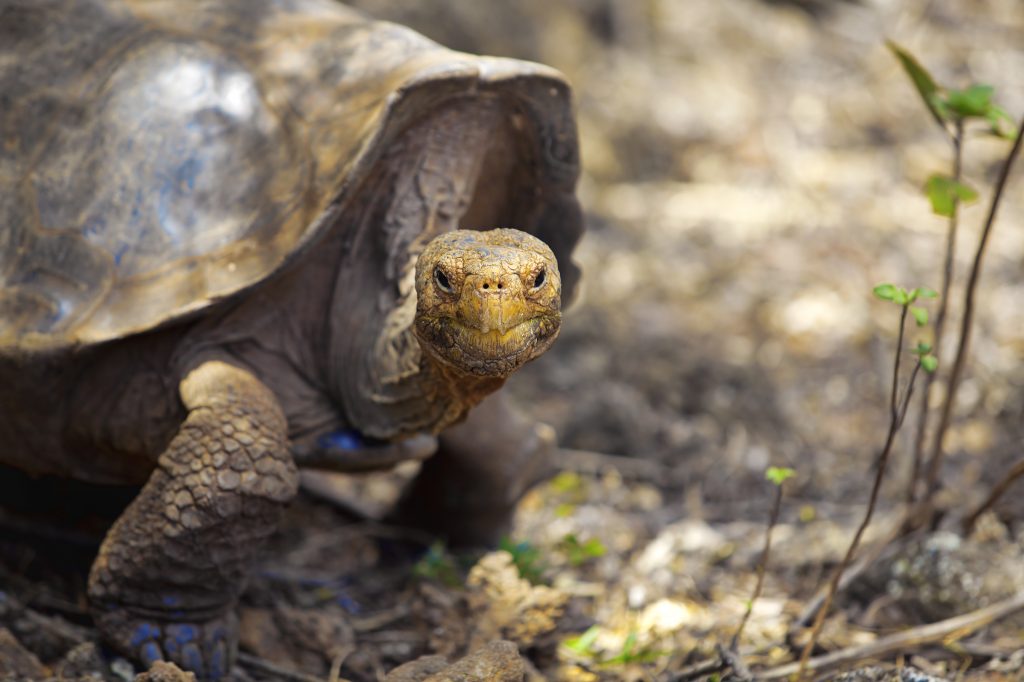
San Cristobal Island
The greenest of all the islands and the spot where Charles Darwin first made landfall, San Cristobal is home to the official capital city of the Galapagos (Puerto Baquerizo Moreno) and, as such, boasts an airport, naval base and government house.
Given San Cristobal’s human habitation (around 6,000) and ease of access, the island has fallen victim to a few devasting species introduced accidentally, so it doesn’t boast nearly as many wildlife species as the more remote islands although it is home to one of the very few nesting sites for Red-footed Boobies and boasts the Galapagos’ only permanent fresh-water source.
Hike the hinterland to spot impossibly pink flamingos and nesting tortoises and visit one of the many exceptionally beautiful coral and sand beaches that are ideal for snorkelling. The beaches attract an array of marine and bird life, including sea lions, manta rays, reef sharks, turtles, blue-footed boobies and a host of migratory birds. With cloud forests covering its central highlands and tropical lagoons and beaches galore, San Cristóbal is arguably the most naturally diverse island in the Galapagos and the easternmost in the archipelago.
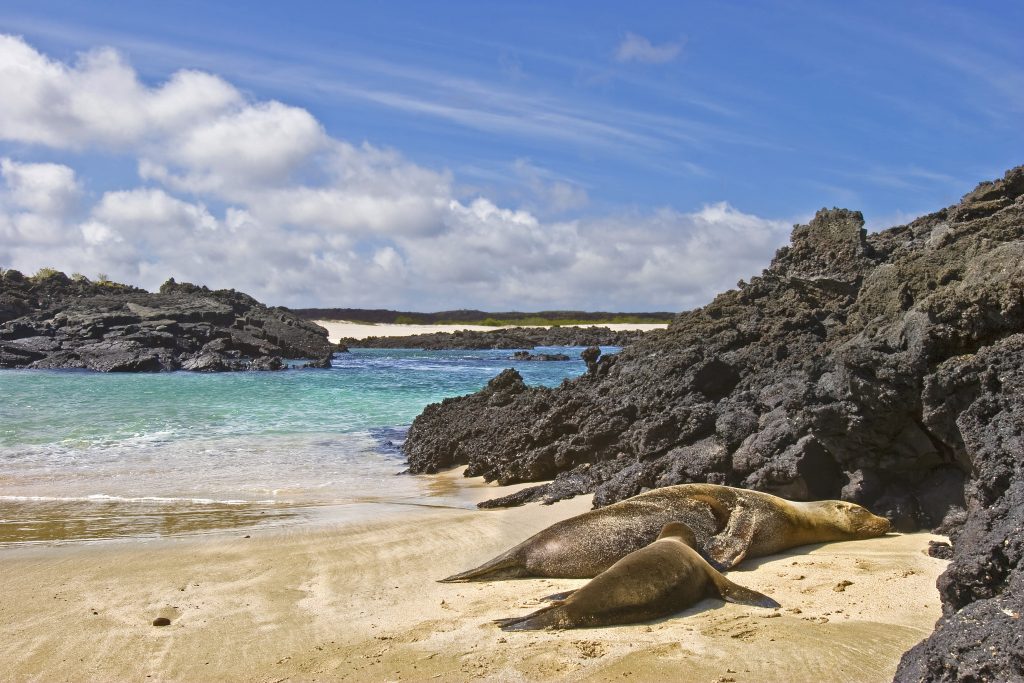
Espanola Island
The southernmost and oldest island in the Galapagos chain, Espanola is a stupendous treasure that’s not to be missed. Home to the only nesting colony of waved albatross in the world and the kind of pristine environment that comes from being so remote and uninhabited, Espanola is the single most important reason to choose a southern itinerary if you don’t have time for a full loop of all the islands.
Espanola’s Punta Suarez, on the westernmost tip, is considered the most wildlife-enriched landing site in the Galapagos, a spot literally overrun with marine iguanas, sea lions, huge colonies of birds and lava lizards, although the entire island is an animal lover’s paradise. Gardner Beach in the north would have to rate as the most spellbinding stretch of beach in the whole archipelago; a place where you can sit among mature sea lions who seem to live without a care in the world and snorkel in the azure waters with inquisitive juveniles.
An absolute must for bird-watching enthusiasts, Espanola attracts many endemic species not found anywhere else, including the albatross, the swallow-tailed gull and the Espanola Mockingbird, among many others. The seas lapping the island’s shore are home to hammerhead sharks, eagle rays, two species of moray eels, king angelfish and an abundance of fish, making this one of the Galapagos’ premier SCUBA diving sites. Do keep in mind that it takes an average of 10-11 hours of sailing from Santa Cruz to reach Espanola, so you can only visit on a Galapagos small ship cruise.
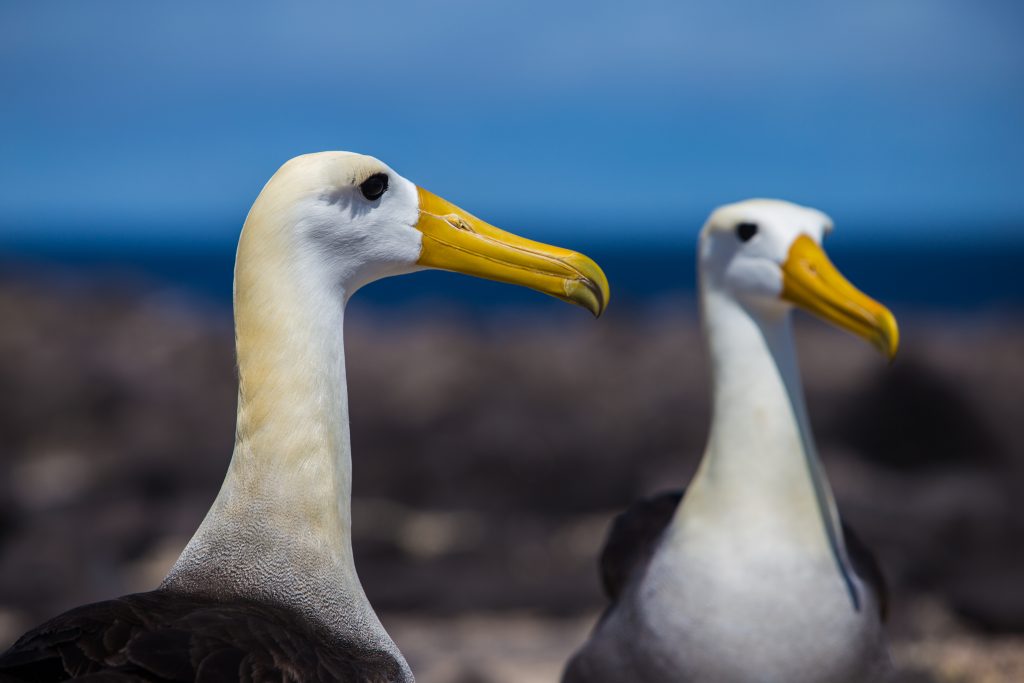
Floreana Island
Just west of Espanola is where you’ll find Floreana, the island with the longest human habitation and boasts some of the most historic sites in the Galapagos. Home to the famous Post Office, used by whalers more than three centuries ago, is still operational and many visitors send postcards home from here. Merely 100 people live on Floreana yet the island’s human history means its distinctive species of Giant Turtle has been completely wiped out.
Floreana is revered for its marine wildlife habitats, colonies of birds and spectacular landscapes. From a Green Sea Turtle nesting site to ancient filled calderas home to an abundance of coral and fish and large colonies of flamingos inhabiting its saltwater lagoon, Floreana is awash with wildlife. Hikes to pirate caves in the central highlands and several brilliant snorkelling spots, not to mention vibrantly coloured sandy beaches, are the highlights of this beautiful isle.

Isabela Island
The largest island in the Galapagos is larger than all the others combined and is renowned for boasting one of the most active volcanoes of all (Sierra Negra) among its five volcanoes and five distinct species of giant turtles. Only 2,000 people live on Isabella so, unlike Santa Cruz, you are immediately immersed in the dramatic and ethereal wilderness of the Galapagos. Onshore excursions include hikes to stunning viewpoints and a historic penal colony (Wall of Tears) a visit to a famous flamingo feeding site and walks alongside spectacular lava tunnels at Las Tintoreras, the most famous and perhaps most spectacular site on the whole island.
The lava formations create unique habitats and attract an astonishing array of wildlife, including Galapagos penguins (the northernmost penguin species on earth), blue-footed boobies, marine Iguanas, Sally Lightfoot crabs, Galapagos green turtles and even white-tipped sharks swimming in the crystal-clear waters.
The penguins are of particular note because even though they do inhabit a few other islands they are easiest to spot on Isabella. The northern and eastern coastlines also boast the only two colonies of flightless cormorants aside from Fernandina. Given the sheer concentration of wildlife, Isabella is considered the most unmissable island to visit so if planning a land-based tour of the Galapagos this is one you won’t want to miss.
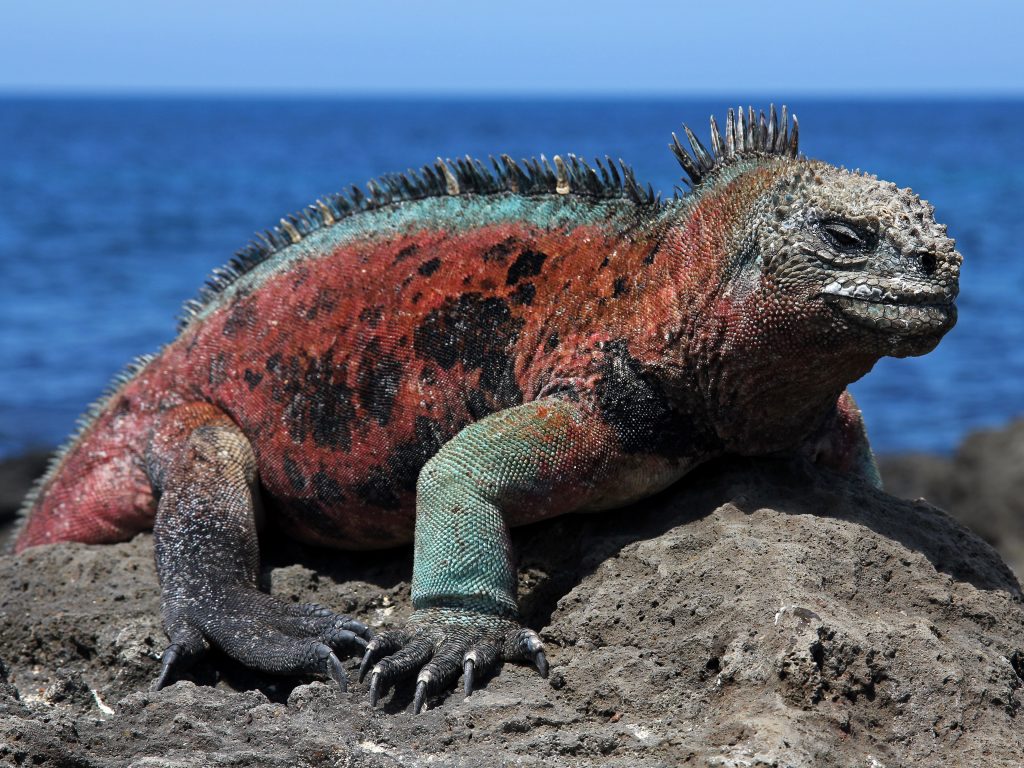
Fernandina Island
Comprising one of the planet’s most pristine ecosystems, Fernandina has evaded human and foreign-species invasion, remaining unspoilt since time immemorial. Yet the intrinsic beauty and natural excellence of this island aren’t the main reason people visit. The main reason is that Fernandina is home to the only nesting site of flightless cormorants in the world.
One of our planet’s rarest birds and an evolutionary treasure beyond words, the flightless cormorant is the one species which truly encapsulates the perfection of the Galapagos Islands. Life for the cormorant here is so good…that it forgot how to fly. The cormorant feeds off the ocean’s enriched waters and never strays more than 200m off the shores of Fernandina. It swims just below the water level and spends hours sunning and drying its feathers between feeding swims.
It has no predators and wants for nothing except a good fishy feed. Given its incredible ecosystem and the ongoing volcanic activity, Fernandina boasts some of the richest waters in the archipelago (which it shares with Isabella) attracting a vast array of wildlife, including Galapagos penguins, marine iguanas, Sally Lightfoot crabs, sea turtles, sharks, rays and plenty of fish. Given the precarious volcanic activity, Fernandina is often off-limits to visitors (which has certainly helped it retain its incredibly pristine environment) and boasts an ever-changing landscape. Fernandina is the westernmost island on the Galapagos archipelago.
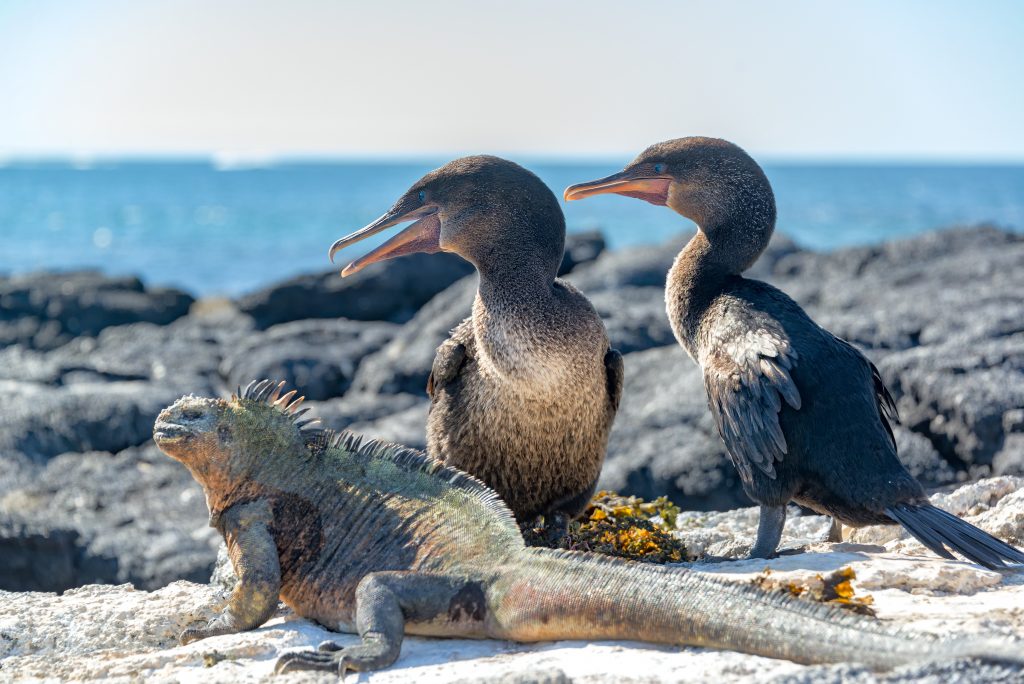
Santiago Island
Santiago’s competes with Espanola for being home to the most idyllic stretch of Galapagos beach, although Playa Espumilla has the added feature of a seasonal lagoon that attracts a mind-boggling array of birds. Green Sea Turtles and flamingos abound, as do hungry birds picking mudflats for their dinner.
Santiago is mainly revered for its extensive colony of fur sea lions which number in the tens of thousands, astonishing considering they were once almost completely eradicated here during the hunting era of the 19th century. Fur sea lion pups, by the way, would have to be the cutest creatures on earth! Dramatic cliffs and lava formations make this one of the most photogenic islands of all and the turquoise waters offer some of the most rewarding snorkelling.
Two small islets just off the southern coast are also included on most visits to Santiago and they’re certainly worth the effort. On Radiba and Chinese Hat, you’ll find red and white coral sandy shores attract birds galore and the snorkelling in the calm waters is absolutely exceptional.
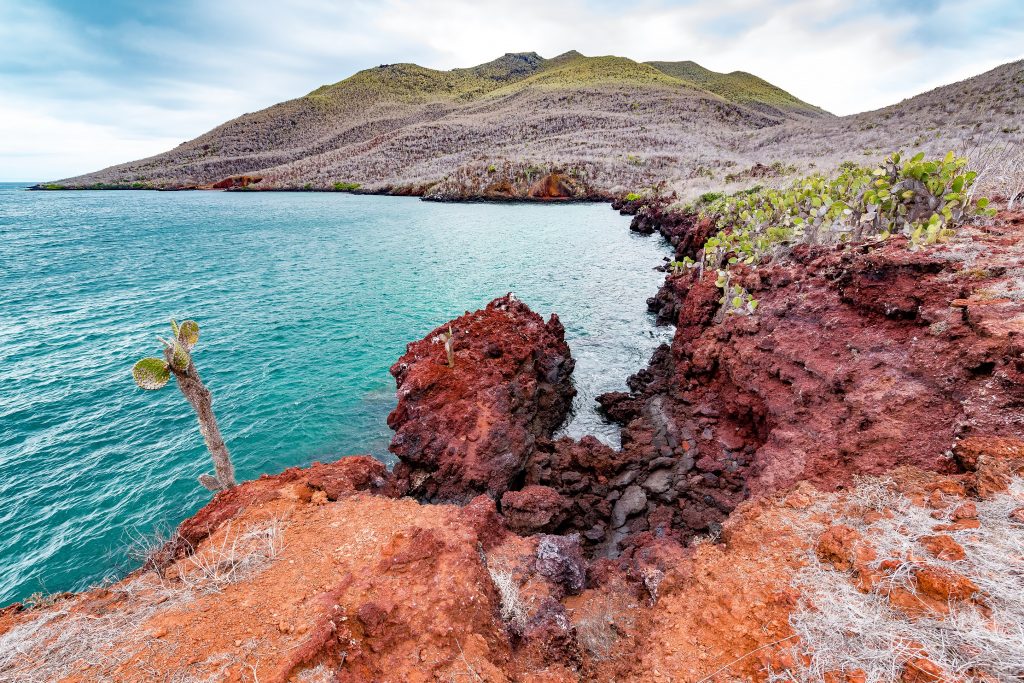
Bartolome Island
Proving the point that size really isn’t everything, Bartolome is a speck of a gem east of Santiago and north of Santa Cruz. What Bartolome lacks in size it more than makes up for in sheer aesthetics and content. Hike to the summit of its highest peak for sensational views of the moonlike landscape and superb coves and dive headfirst into its crystalline waters to play tag with playful seals, penguins and turtles, the only place you’ll find all three.
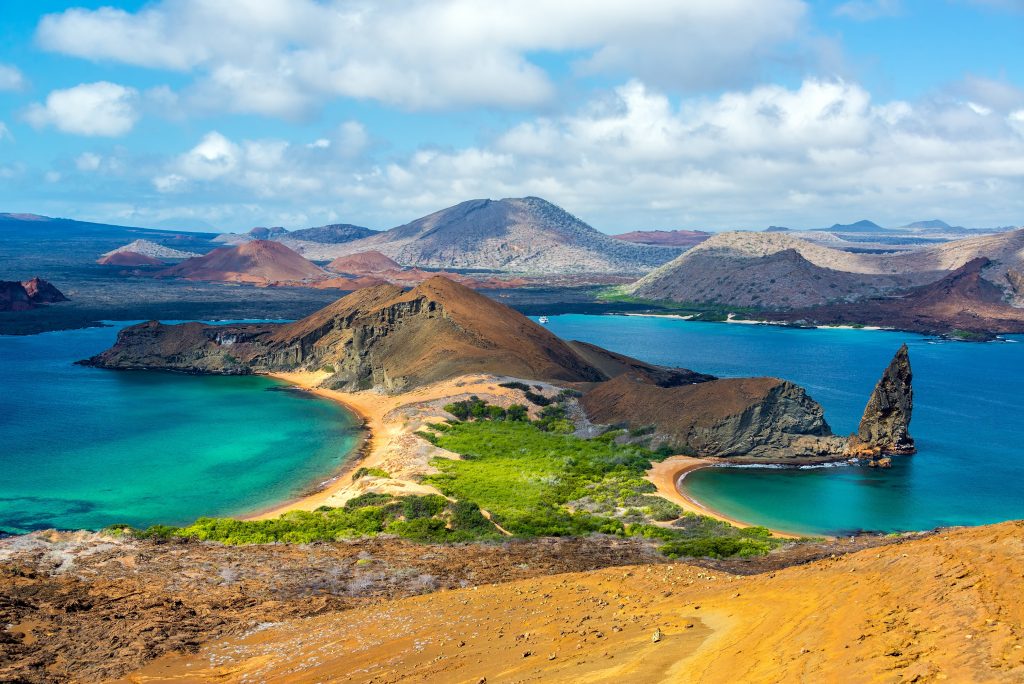
Genovesa Island
Considered the best island for bird lovers, Genovesa is on the northern fringes of the archipelago and is, funnily enough, often called Bird Island. Extensive and numerous colonies of frigate birds, finches, boobies and over 200,000 petrels alone. Genovesa is the prime reason to choose a northern loop itinerary if, once again, you don’t have the time to enjoy a full excursion of the whole archipelago.
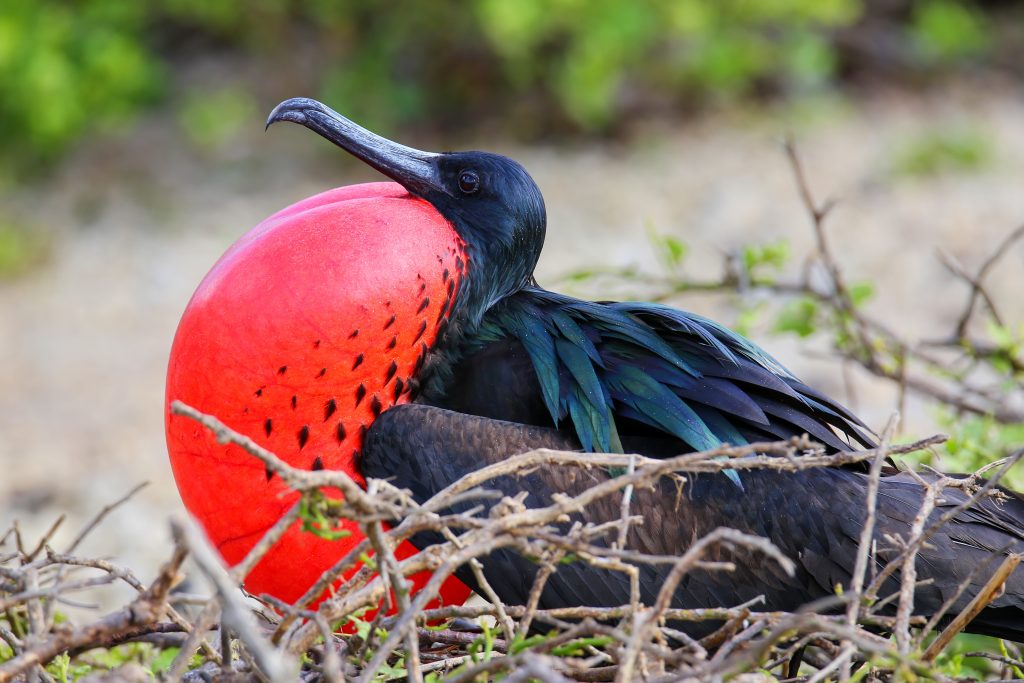
We hope the above overview of the main islands will help you determine which itinerary is best for you, noting that to visit them all you’d need to choose a cruise that runs for 10-14 days. When choosing any cruise that runs for a week, or less, you’ll have to carefully read the itinerary so you have an idea of which islands you’ll visit. You will miss out on certain species no matter which shorter cruise you choose, so best to make the choice yourself as to which one you’ll leave for your next visit.
Of course, we are right here if you’d love to discuss your options with one of our dedicated and expert Galapagos Islands crew. Just tell us what you absolutely must see and do, how long you have to travel and what your budget is and we’ll match you up with the right ship and the right itinerary. We are your experienced Galapagos match-makers so don’t hesitate to contact us at any time.

Talk to one of our experienced Destination Specialists to turn your Antarctic, Arctic and South American dream into a reality.
Contact us